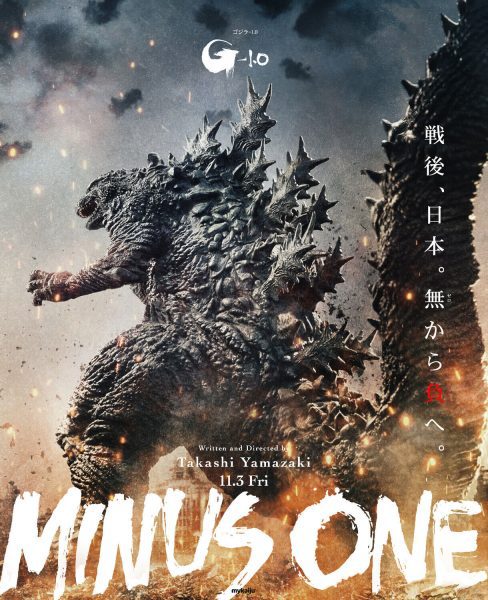by Eric Lindbom
This classic horror nut feels sheepish but here goes. I’m not a Godzilla guy. I’ll concede producer/director Ishiro Honda and his Toho Studios created an iconic, trademark monster and a rogues gallery of other memorable beasties like Rodan, a flying Pteranodon with a snappy origin movie, Mothra, and Ghidorah (a three-headed reptile). Also, I have fond childhood TV memories of GODZILLA: KING OF THE MONSTERS (1954).
However, after that strong start, the Godzilla series turned goofy. Following early embarrassments like MONSTER ZERO and the kiddie travesties SON OF GODZILLA and GODZILLA’S REVENGE I fled (and didn’t see later entries like GODZILLA VS. 1). THE THING. 2). MEGALON 3). THE SEA MONSTER. 4). THE SMOG MONSTER and many more. Seeing the outsized reptile flounce around and trash tinker toy Tokyo got stale fast especially since, like Hulk Hogan, the big brute kept vacillating between hero and villain. Decades later, I so despised Roland Emmerich’s bloated GODZILLA (1998) I’ve avoided any Hollywood big budget bids. I haven’t sampled Apple +’s new MONARCH: LEGACY OF MONSTERS series either.
However, earlier this year I finally saw GOJIRA (1954) the original Japanes version of Godzilla directed by Honda including 20 minutes excised for the US version which substituted expository footage of Raymond Burr as a reporter. Calling GOJIRA an improvement over the creditable GODZILLA: KING OF THE MONSTERS grossly understates its impact. GOJIRA excels as a mournful elegy to nuclear devastated Japan with a convincing cast you root for (unlike the military hard asses and boring adonis scientists from ‘50s US giant insect romps). Effective atom age horror, GOJIRA can make its case to an art house audience.
Proudly carrying that torch, comes 2023’s spectacular GOJIRA successor, GODZILLA: MINUS ONE from a revitalized Toho Studios which recently arrived on our shores. At this writing, in its second week of domestic release, it has raked up more than $25 million as a word of mouth sensation and is thankfully subtitled not dubbed.
GODZILLA: MINUS ONE scores on multiple levels particularly conceptually. Writer/director Takashi Yamazaki (who also spearheaded the visual effects) shrewdly set the film in 1945 – 1947 eschewing yawnable CGI for a cool retro feel with classic old style fighter planes and tanks. More crucially, the timeline follows Japan’s catastrophic defeat in WWII and the horrific bombing of Hiroshima and Nagasaki (with radiation that served as Godzilla’s mother’s milk). For this reason, the overall theme involves national shame as personified by main character Koichi (an effectively emotive Ryunosuke Kamiki).
Koichi dodges his kamikaze flight by pretending his plane is damaged and lands on Odo Island for unneeded mechanical assistance. There he freezes up again, too scared to fire from his beached plane when Godzilla (not yet at full radiated height and strength but a relentless predator) attacks the island platoon killing all but Koichi and Tachibana (Munetaka Aoki) a sullen mechanic who blames Koichi for the massacre. Koichi returns home to the town of Ginza now just a shambles, where, ironically, he’s shamed as a survivor and failed kamikaze. Koichi meets Noriko (Minami Hamabe), a woman he finds among the ruins carrying an orphaned baby not her own. While she moves into his wreck of a home, Koichi suffers so much PTSD and guilt he’s unable to establish a relationship with her.
He earns a face saving job on a rickety wooden boat destroying unexploded mines and the crew (well-delineated characters we warm up to) bond. These shipboard scenes echo JAWS and (like Spielberg) Takashi minimizes Godzilla’s coming attack scenes, on land and water, for maximum impact. When the feckless Japanese government proves unable to stop the beast (and the US is too busy with Cold War faces offs with Russia), the crew join other citizens to raise their own vigilante armada to meet the moment.
The sequences where Godzilla destroys the newly-rebuilt Ginza are jarring and masterfully staged, especially a decimated passenger train (reminiscent of a similar highlight from the original KING KONG).
For all the tension and cataclysm, what elevates GODZILLA: MINUS ONE are rousing group dynamics and Koichi’s arc as he develops focus and a spine. It’s no small thing that its strongest virtues are the actors and the script. For once, we actually care about the humans (those that survive and those crushed under giant knobby feet). GODZILLA: MINUS ONE will stun, and even move, audiences of any age even pop culture parodists who treat the title character as kitsch.
Eric Lindbom is a hardcore horror buff with a strong stomach, weaned on the Universal classics from the ’30s and ’40s. He’s written film and/or music reviews for City Pages, Twin Cities Reader, LA WEEKLY, Request magazine and Netflix. He co-edits triggerwarningshortfiction.com, a site specializing in horror, fantasy and crime short stories with illustrations by co-editor John Skewes. He lives in Los Angeles.







